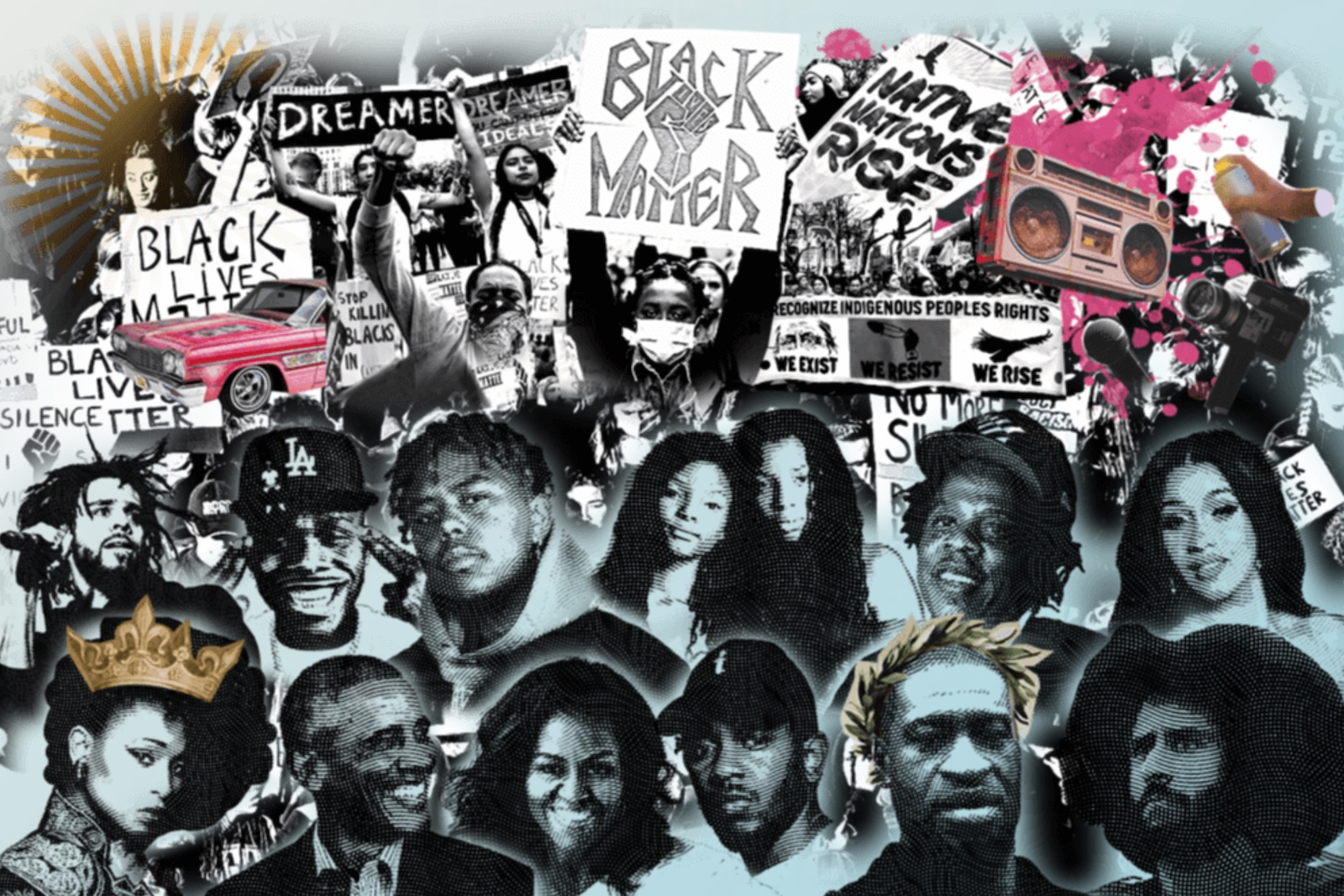
Culture
How an Innovative Curriculum Uses Hip-Hop and Pop Culture to Educate Students
When the pandemic forced students to engage with virtual learning in 2020, several new programs rose to the occasion. Among them is We Do It for the Culture, which provides life lessons inside and outside of the classroom through pop culture and hip-hop.
I spoke to Jamila Sams, M.Ed., the creator of the curriculum and an educator with over 20 years of experience working with youth of all ages and backgrounds, about how We Do It for the Culture came to be, its effects on students, and where she hopes the program is headed.
Where did the idea for We Do It for the Culture come from, and how was it developed?
We Do It for the Culture is a culturally responsive, social-emotional learning curriculum rooted in the elements of hip-hop for grades 6-12. I started in the space of social-emotional learning…there were not any culturally responsive curriculums out there. A lot of the ones that were out there really did not speak to the unique perspective and experiences of Black and brown students. So culturally responsive social-emotional learning is really important for our students to see themselves and to really feel affirmed in their culture and identities.
I started it because it just didn’t exist. I am an education consultant, I primarily focus on school climate and culture, and social-emotional learning is a part of school climate and culture. It’s really at the root of developing a positive, productive, and equitable school climate and culture. I would refer other curriculums to the schools that I work with, and the feedback that they gave me was that they were well-packaged, but really didn’t engage students.
They were really looking for something that students see themselves in and really relate to in order to have conversations about topics that were important to them. Not only is We Do It for the Culture culturally relevant, but it’s also tapped into hip-hop culture and pop culture in general, things students are listening to, responding to, and engaged with. Why not extract lessons from those real-world experiences?
Did the process of going virtual during the pandemic help shape the process of developing the curriculum?
Yes, absolutely. Prior to the pandemic, I was writing lessons every summer and sending those out to my clients that were requesting culturally responsive social-emotional learning curriculum opportunities for their advisory programs. The pandemic really gave me the time to take all of those lessons and begin to organize them in a media-friendly way. Now, we’re up to 65 lessons on the actual website, and we release new ones biweekly. We offer an opportunity to take the same lesson you would do in person, but we give what’s called “virtual tips” on the website for how to take those same lessons and implement them online with students, as well. So the curriculum can be used either in person or online.
I’m a massive Jay-Z fan and stumbled on a lesson on the website featuring him. Obviously, hip-hop and pop culture play a role, and you spoke about engagement. How important is that engagement, and also relatability, when trying to captivate students?
It’s imperative, even from just a scientific standpoint. The way the teenage brain works is that their social networks are actually more important to them than even some of their more immediate networks like their family members. During that phase, outside influences weigh very heavily on the teenage brain. So it’s really important that we understand that from a scientific perspective, but also honor that by making sure when we’re delivering content that is not only relevant, but culturally responsive.
It’s extremely important. There’s a wide range of artists that we may feature on the platform, but also keeping in mind that we’re working with grade 6-12 students in 2022. Sometimes, they may look at Jay-Z and say “oh, that’s Beyonce’s husband.” They’re not growing up in the era of Jay-Z, they’re growing up in the era of Lil Durk or Lil Yachty. So, it’s really important that I try to have a balance of content for them. They’re still engaged with the culture, but it’s also relevant to their age group.
Sometimes, that’s difficult, because some of the content that’s out there is not appropriate for schools. There’s some misogynistic content, or profanity…So it’s really about the effort that my team makes to find content using these same artists that our students are listening to, but in a way where we’re highlighting the positive things the artists are doing. For example, 21 Savage may not always have lyrics to be shared in schools. However, 21 Savage also has a really profound financial literacy component in a partnership with a bank, so that’s what we highlight. We try to find ways to highlight the good that’s happening in hip-hop, and expose students to lessons that way.
What has been the reaction from students and educators to this curriculum?
They’re really asking “where has this been?” For those who may not know, advisory is a dedicated time of day where teachers kind of take off their teacher hat and really serve as a mentor or coach to a small group of students. They discuss things like life skills and academic support. One of the biggest reasons why that time slot of advisory often fails is that they do not have culturally responsive curriculum for their students. Therefore, the students are disengaged, the teachers are disengaged, that really crucial time now gets wasted, and we’re missing opportunities to build relationships with students.

That is the reaction that I get from schools: they say that their advisory program has been much better now that they have something that appeals to students, and teachers are more engaged, as well. Another positive thing that I hear is that teachers now feel more comfortable having difficult conversations with students, everything from police brutality to the recent tragedy in Buffalo. They feel equipped to have these conversations because We Do It for the Culture gives them that foundation. It’s an eye-opener for teachers.
How does the curriculum encourage discussion and reflection on things like police brutality or recent mass shootings, as well as events in our political or national discourse, and make the issues and history more accessible for students?
Even though we offer training for We Do It for the Culture, I cannot control the minds, biases, and thoughts of all the teachers that engage with the curriculum. So I’m very intentional in making sure that our content is student-facing. For example, for the tragedy that just happened in Buffalo, we released a lesson called “We Got Questions.” It is all about using reflection through the art of creating questions. There’s a direct connection between the types of questions that we ask, the answers that we receive, and the action that we take.
Getting students to understand the power of questioning is really important. This whole lesson was really focused on students watching a news clip of what happened in Buffalo, and then working in groups to create critical thinking questions to support what happened. Then, they would ask each other those questions and start to create dialogue amongst themselves in the classroom. The teacher’s role was really just to be a facilitator and to create this safe space in order for students to have that dialogue with each other.
We try to make sure, especially for those difficult conversations, that we’re actually leading with the voices of the students, and the teacher is just there to create the environment. That way, we can prevent any teacher bias or teachers that don’t feel equipped to have these conversations, for whatever reason. This way, the ownership is actually on the students to bring it out and to start to foster conversations amongst themselves. For those teachers who are equipped to have it, great! But for those that aren’t, this is a way to still address it, but really listen to what students have to say.
What’s the most important thing that you want students to take away from this curriculum?
I think the most important thing that I want students to take away is that it is okay to express yourself in a meaningful way. I think that it’s really important for them to understand that their voices matter, that their voice needs to be heard, and to always look for the lesson in a situation. That’s why a lot of our lessons are pulled from real-world scenarios, because I want them to go about their lives, whether it’s in current events or whether it’s something that’s happening internally or with their peer group, I really want them to see the whole picture and extract what this experience is trying to teach them. That causes them to be more reflective. Using their voice and being more reflective, I think, are really important skills for our students to develop as they’re using the curriculum.
Where do you see things going? Is there a bigger goal or vision that you have for the future of We Do It for the Culture?
Yes, absolutely. Hip-hop is a universal art form. Wherever there are marginalized people or people whose voices often go unheard, that is where hip-hop lives and thrives. In all parts of the world, we have people that have been marginalized. So, I want to make sure We Do It for the Culture is a global phenomenon, and that we are highlighting those stories all throughout the world so that young people’s voices are collectively heard. I want to make it so that we’re also lifting up the narratives of people who have been marginalized all over the world to really create community, and also work collectively to address some of these issues.

